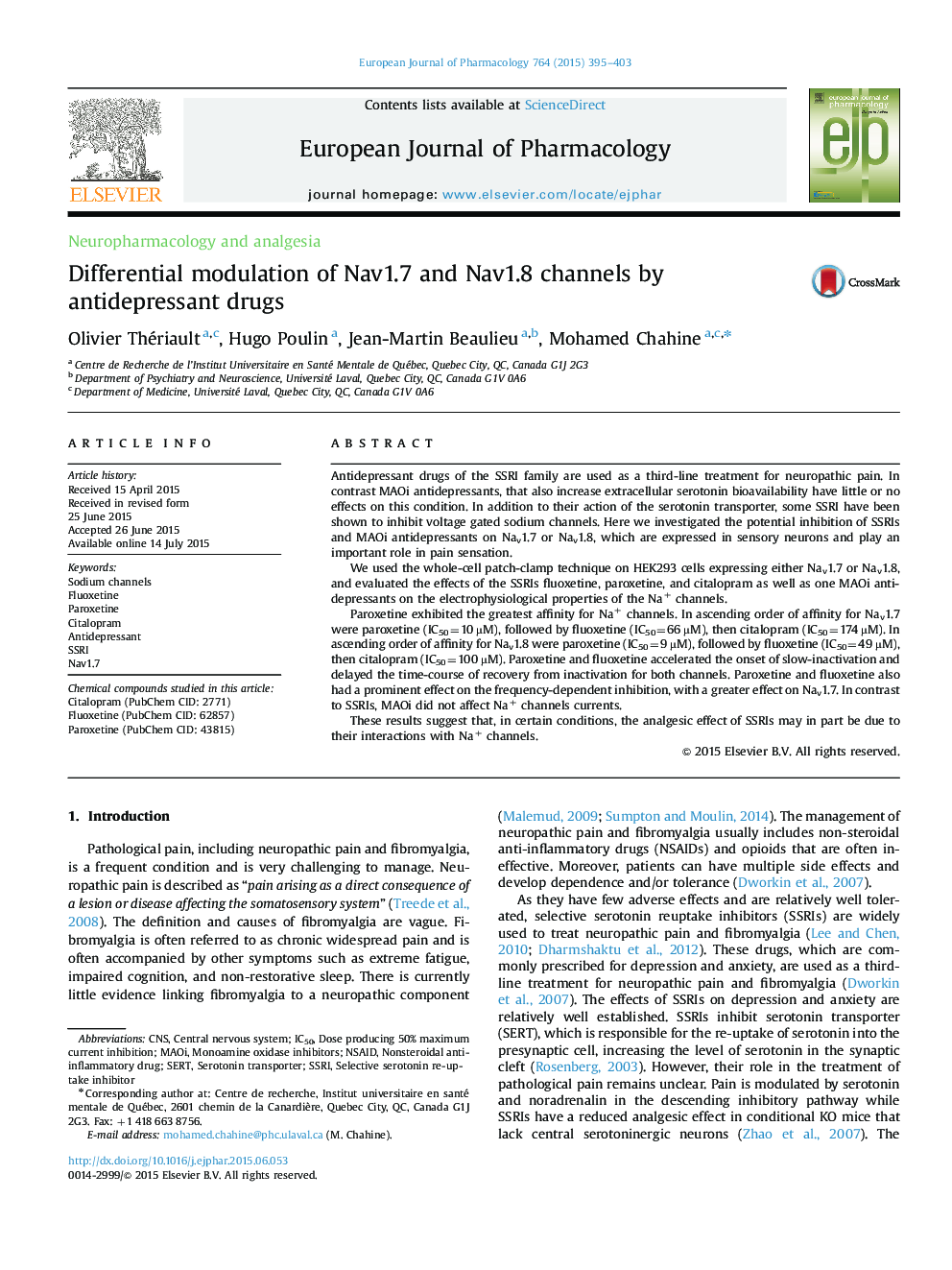| Article ID | Journal | Published Year | Pages | File Type |
|---|---|---|---|---|
| 2531344 | European Journal of Pharmacology | 2015 | 9 Pages |
Antidepressant drugs of the SSRI family are used as a third-line treatment for neuropathic pain. In contrast MAOi antidepressants, that also increase extracellular serotonin bioavailability have little or no effects on this condition. In addition to their action of the serotonin transporter, some SSRI have been shown to inhibit voltage gated sodium channels. Here we investigated the potential inhibition of SSRIs and MAOi antidepressants on Nav1.7 or Nav1.8, which are expressed in sensory neurons and play an important role in pain sensation.We used the whole-cell patch-clamp technique on HEK293 cells expressing either Nav1.7 or Nav1.8, and evaluated the effects of the SSRIs fluoxetine, paroxetine, and citalopram as well as one MAOi antidepressants on the electrophysiological properties of the Na+ channels.Paroxetine exhibited the greatest affinity for Na+ channels. In ascending order of affinity for Nav1.7 were paroxetine (IC50=10 µM), followed by fluoxetine (IC50=66 µM), then citalopram (IC50=174 µM). In ascending order of affinity for Nav1.8 were paroxetine (IC50=9 µM), followed by fluoxetine (IC50=49 µM), then citalopram (IC50=100 µM). Paroxetine and fluoxetine accelerated the onset of slow-inactivation and delayed the time-course of recovery from inactivation for both channels. Paroxetine and fluoxetine also had a prominent effect on the frequency-dependent inhibition, with a greater effect on Nav1.7. In contrast to SSRIs, MAOi did not affect Na+ channels currents.These results suggest that, in certain conditions, the analgesic effect of SSRIs may in part be due to their interactions with Na+ channels.
